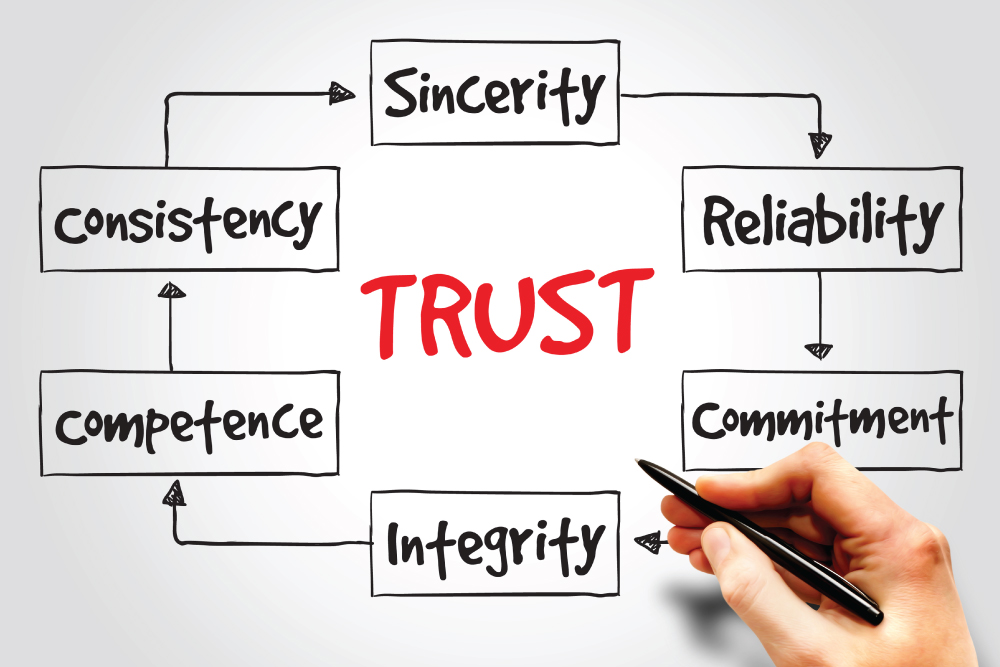In the B2B world, trust is a critical component of building productive, long-term partnerships, so transparency is even more critical. Many businesses assume this means statistics on safety, quality standards and ROI. These things are important, of course, but they aren’t the end of transparency.
In the manufacturing industry, some players still believe that success depends on maintaining absolute secrecy. Of course, some trade secrets must remain behind closed doors, but modern entrepreneurs want one thing above all else: information. Data helps everyone make smarter decisions, and technology has spoiled us all with an abundance of answers to nearly every question.
So how can contractors satisfy a business owner’s need to know everything while balancing their own need to protect their processes? Here are six ways to bring more transparency into your B2B model.
1. Educate clients. Transparency isn’t always about disclosing every detail of your business. Walking customers through the step-by-step process of what you do and how you do it allows them to feel at ease about trusting their business to you. Consider producing visually driven marketing materials with easy-to-understand details about what they are really getting. A customer is more likely to give you their business if they feel you have your processes under control. A good way to convey that is to peel back the layers a little bit.
Teaching clients about your industry helps them understand what they are spending their money on and where the value comes in. If you make a strong case with education and documentation, most clients are willing to pay a higher price.
2. Build trust. All relationships are stronger if they begin and end with honesty. It is unethical to fudge information to make a sale. Believe it or not, there are companies who still do this. Even small deceptions have a way of coming out as the process unfolds, and that can completely destroy your business. Being open and honest about your company allows customers to trust you. What does every successful personal relationship start with? Trust.
In addition to being truthful, trust comes from providing useful knowledge and advice. Don’t hold back ideas in the hopes of getting more money. As your clients benefit from your contributions, they will rely on you more and more, and you can turn simple questions into a long-term contract.
3. Provide options. In a B2B environment, brands want to feel like they are a partner, not another company in the supply chain. Transparency is about giving your clients the information they need to make their own choices, fully knowing the pros and cons beforehand.
4. Build your reputation. A bank of positive online reviews, peer recommendations, and positive media coverage can help showcase the type of company you are. By constantly building your reputation, you are showing instead of telling your story and offering the ultimate transparency to prospective clients.
Additionally, building up positive social capital can help in those limited situations where you can’t share all of the information that customers want.
5. Pick your battles. You can’t share everything about your company - sometimes profit margins, proprietary formulas or codes would hurt your bottom line if they were made public. However, you might find that it’s possible to offer more information than you thought. Instead of defaulting to the position that you won’t share information, carefully consider the ramifications. If it doesn’t actually cause a problem, defaulting to transparency is always a better choice. That way, when there is something, you won’t share, clients know you have a good reason.
For things you instinctively don’t want to share, consider offering a compromise. Perhaps you might be willing to share more information if they will sign a longer agreement or pay a higher price. If transparency is your clients’ ultimate goal, it will be worth it to both of you to invest a little more in the partnership.
6. Share what you can. More isn’t always better, but in the case of transparency, the more you can share, the better. For example, private companies are not legally obligated to publish their safety protocols and records, but sharing this information can go a long way to establishing that trust entrepreneurs are looking for. Sourcing, business goals, partnerships and even salaries are other things that you can reasonably be transparent about. As you make decisions that may affect your clients, think about whether the reasons behind those decisions can reasonably be shared, and share what you can.
Transparency has become a buzzword, but that doesn't mean there isn’t value in the concept. Don’t let it become a PR stunt––truly open up with the information that matters to build up education and trust with your customers. You may be surprised at the positive outcomes.






